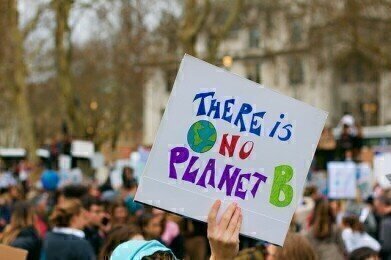Fuel for Thought
How Much Methane Does Fracking Release?
Dec 04 2020
New data from a fracking site in Blackpool has revealed the extent of the industry’s environmental footprint, with researchers tracing a huge 4.2-tonnes of methane gas release over a weeklong period in January 2019. This is the equivalent to more than 140 transatlantic flights. Spearheaded by the University of Manchester, the study puts the enormous environmental impact of fracking into perspective.
“The dangerous consequences of global warming are now beginning to become evident. Routine monitoring and scrutiny of the fossil fuel industry is crucial if we are to curb impacts, and also if we are to meet the UK Government’s Net Zero targets,” says lead author of the paper Dr Jacob Shaw.
To measure average methane emissions over a seven-day period Shaw and his team compared two years of baseline data, factoring in variables such as seasonal weather and wind direction. They concluded that over a weeklong period the Blackpool site released 4.2-tonnes of methane gas into the atmosphere. This was caused by the release of non-combusted methane at the British shale gas well, which is more than two kilometres deep.
Addressing the climate change crisis
More than 28 times more potent than carbon dioxide when it comes to global warming, methane is one of the most destructive greenhouse gases. It’s playing a key role in accelerating climate change, with leader of the project Professor Grant Allen asserting more need to be done to accurately track the carbon footprints of shale gas wells and the industry in general.
“Our work shows that atmospheric monitoring of shale gas activity is crucial to meaningfully assess any role that the industry may have in the UK’s future energy mix and whether it can (or cannot) be consistent with the UK’s stated aim of achieving net-zero carbon emissions by 2015,” says Allen. “This work informs that debate and provides new data on emissions from well-clearing activities that must be captured in industry life cycle assessments, and should be used to inform regulatory oversight and industrial practices surrounding venting activities such as the event quantified here. Such emissions should be avoided wherever possible,” adds Allen.
The dangers of dairy
While shale drilling releases a significant amount of methane into the atmosphere it’s not the only industry with an environmental footprint. Agriculture is a major contributor, with the Australian farming industry accounting for around 13% of the country’s total greenhouse gas emissions. Cows are notorious contributors, producing around 600 litres of methane a day through exhalation and burping.
The fracking and dairy industries aren’t the only sectors under fire, with shipping also criticised for its environmental footprint. Find out more about how the maritime industry is working towards cleaner and more environmentally friendly operations in ‘Clean Burning Marine Fuels Making A Difference To Air Quality.’
Digital Edition
PIN 25.1 Feb/March
March 2024
In This Edition Safety - The technology behind the ION Science Tiger XT - Safety with ammonia and LOHCs as hydrogen carriers Analytical Instrumentation - Discussion on new tribology te...
View all digital editions
Events
Apr 28 2024 Montreal, Quebec, Canada
Apr 30 2024 Birmingham, UK
May 03 2024 Seoul, South Korea
May 05 2024 Seville, Spain
May 06 2024 Riyadh, Saudi Arabia


















